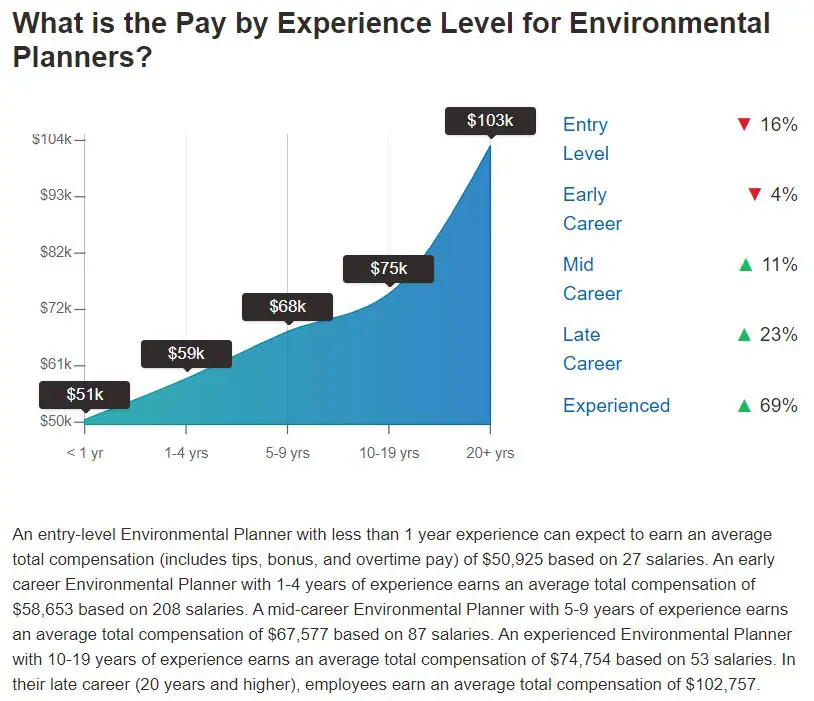Who is an Environmental Planner?
Environmental Planner is an expert in the field of Environmental Planning who prioritizes the environment for the health and well being of the society. Environmental Planner aims to analyse and reduce the impact of any Planning related project or development project be it Highway construction, Real estate building, or any other infrastructure project. He or she does so by following the necessary legal framework and regulations at the national and at the state level. It makes sure no problem should arise in the interplay of the built environment and natural environment. It emphasizes the sustainability of settlements by maintaining the balance between the three components: Economic, Environment, and Society. As the settlements today are facing vital challenges in terms of disasters like flooding, landslides, heat waves, drought; poor air quality; drastic changes in the climatic conditions; loss of habitat and species, Planner plays a significant role in combating these challenges. Experts working on these issues undergo various training and undertake various environmental studies, ecology, environmental law, environmental science, regional planning and courses in related field.

What is Environmental Planning?
It is an area of specialization and part of various undergraduate, post graduate or doctorate degree. These courses focuses on solving environmental problems concerning land use, policy framework, and design during the planning of settlements. The term environment suggests, the biotic and abiotic factors around us. It involves air and its quality, water, and its quality which may be surface or groundwater, micro, and macro-climatic conditions, soil, flora (forests and other green areas) and fauna, agricultural lands, and its interrelationship with the built environment, etc. Environmental Planning does not only give priority to the environment but deals with the problems arising with the interaction of the natural and built environment. A person who pursues a course in this is usually referred as “Environmental Planner” and generally called environmental professionals. A senior environmental planner have about 10 years of professional experience and possess minimum qualifications as master’s degree in environmental planning. Whereas qualifications for an entry level planner can be limited to a bachelor’s degree in a related field.
Read about: What is Environmental Planning?, Ecosystem Valuation & Services | Meaning, History & Example
Roles, Responsibilities & Scope
Environmental Planner job is to plan and look after development projects and events which require special attention to the environment. Their job is also associated with planning projects requiring high expertise in every aspect along with Environment. Although they are involved in development planning, the tasks and responsibilities may differ depending upon a project to project. This work may involve feasibility studies, site planning, Strength Weakness Opportunity, and Constraints (SWOT) analysis followed by the projections and proposals. Land-use Planning, Public health Planning, Solid waste management, Sanitation Plans, conducting Environment Impact Assessment (EIA), ensuring compliance with Disaster Management Plans, Environment impact statements (EIS), and Review of Plans are some key tasks. Also, Environmental management and monitoring, Energy, environmental design, landscape management, Park and recreation facilities planning can also be the part job depending upon the purpose and scale of the project. All this is done for the well-being of the people, stakeholder consultation is one of the major tasks for these planning experts. Environmental education and awareness about environmental concerns is well understood by businesses as well. Senior environmental planner and environmental scientist have about a decade of work experience, they occupy top and highly reputed environmental planner position such as a project manager and department head.
Related Article: National Environmental Policy Act (NEPA) | Bureau of Land Management (blm.gov)
Environmental Planner Salary
If you plan make environmental planning as a career, then expect a lot of variation in pay scale. Salary differs a lot from country to country, this difference is also because of the rules and regulations in a country which needs to be followed. The importance of an environmental planner thus gets effected. The nature and scale of project is another decisive factor in deciding the median salary. Also, a planner with good writing skills, experience and certifications can expect to draw a much higher compensation than the average salary.
As per Payscale.com, Avg. Base Salary of an Environmental planner is $61,000 (Annual). Base salary ranges from $46K to $83K, such a huge difference in the base salary can be attributed to the skills and experience which a person possess.

Source: Environmental Planner Salary | PayScale
Role in framing Environmental Laws
Environmental planners also deals with framing of environmental law and environmental regulations. Such laws govern the environmental assessment (to understand and check environmental impacts), restoration projects, environmental quality and certification. Compliance with the guidelines and regulations is not just for the planners, it’s a shared responsibility of the people involved in the project. Environmental planners, engineers, environmental scientists, regulatory agencies, government departments work together to frame such laws.
Major types of projects which requires input from Environmental Planner
Any large scale infrastructure project requires environmentalists to be involved. Such projects require environmental conditions to be taken into account and the environmental issues which needs to be addressed. Transportation projects such as highway construction, bridges, ports, harbours requires experts. Such projects not only have effect on land, but also on water bodies such as lakes, rivers and oceans over which the structures will be built. Landscape architect is also often involved in such projects, for projects which require restoration & conservation, expert such as a environmental restoration planner may be involved.
Another kind of projects are townships, gated societies, group housing, commercial establishments, hospitals and higher education facilities since these structures are used by hundred and thousand of people. To meet their daily need of water, electricity, space, parking, waste management, it is necessary to conduct required assessments. Railway lines, airports, interstate bus terminals, metro stations are other such projects.
| Area of Responsibility | Representative tasks |
| Land-use Planning | Site selection, population forecasting, Allocating future land for different land-uses, Calculating carrying capacity, land suitability, etc. |
| Public health Planning | Water and air quality monitoring, other environmental analysis and evaluation, etc. |
| Solid waste management Plans | Allocating space for landfills and dumping sites, Collection and disposal of solid waste, Routing of vehicles, Policy formulation, etc. |
| City Sanitation Plans | Community and public toilet facility mapping, etc. |
| Environment Impact Assessment (EIA) | Impact Forecasting, Evaluation, and development of alternatives for the project, etc. |
| Disaster Management Plans | Analysis of current scenario, mapping of previous disasters, impact identification, future modeling, and forecasting, etc. |
| Environment impact statements (EIS) | Report preparation of current and future scenarios of the proposed project etc. |
| Review of Plans | Public facilities review, Infrastructure, and other services review, etc. |
| Environment management and monitoring | Collecting samples and identification of air, water, and soil quality, taking actions, etc. |
| Energy planning | Alternative energy uses, energy budget analysis, etc. |
| Environmental design | Streetscape designing, Riverfront development, micro-climate performance studies with the use of environmental elements, etc. |
| Landscape management | Storm water control, flood plain management, wetland conservation, etc. |
| Park and recreation facilities planning | Selection of site, landscape design, and other amenities, evaluating its impact on the surrounding environment, etc. |
Source: Author
The three key responsibilities include:
- Technical such as cartography or mapping, analysing, certification, modeling, proposing and monitoring, etc.
- The design involves the preparation of Plans and design of facilities and services etc.
- Decision making involves formulating necessary policies, compliance with legal and institutional frameworks, evaluating the alternatives of the project, etc.
Who can be an Environmental Planner?
Environmental Planning is a multidisciplinary field. It requires a variety of skills and perspectives from different backgrounds. More diversity indicates the complexity of the course. Environmental Planning can be practiced by professionals from various backgrounds with a master degree/ certification or specialisation in environmental planning. These include design (architecture, urban design, landscape architecture, conservation architecture), science (geography, Environment, Sociology, Environmental Psychology), engineering (Civil, Chemical), public health and all other fields related to the environment (Sustainability, Climate Change, Natural resources, Forest management, Agriculture, Landscape ecology, Environmental Geosciences, Renewable, and Sustainable energy).
Related: Reasons why Urban Planning is important for cities
Future prospects
Environmental Planners not only brings health and well-being but also enhances the lives of people in numerous ways. They can work as or with scientists and other technical experts are finding a direct correlation of Environment with different aspects of city planning. For instance, air pollution not only affects the health of the individuals while it also increases the crime rates in the city. Their role is not limited as stated above, there are various diverse dimensions to it from the preparation of city sanitation and public health policies.
Planners works in government organizations having different tasks and responsibilities. For instance Disaster management cell, Pollution control boards, Urban development authorities, Public health have different tasks assigned to the Environmental Planner. In the case of the Private sector and NGOs, there is direct communication with the stakeholders, wide research and diverse models to work upon. The multilateral organizations like that of WHO, UNDP, ADB also hire Environmental Planners to meet the international standard of development while working on Sustainable Development Goals (SDGs) and other aspects of the environment. Not only that, one can work as an Independent researcher or consultant after pursuing Environmental Planning. The tasks, responsibilities, and where they are hired is not limited. More the countries are going toward the era of urbanization and development, more is the need for Environmental Planner to make the cities liveable and sustainable.
Related: Importance of ecology